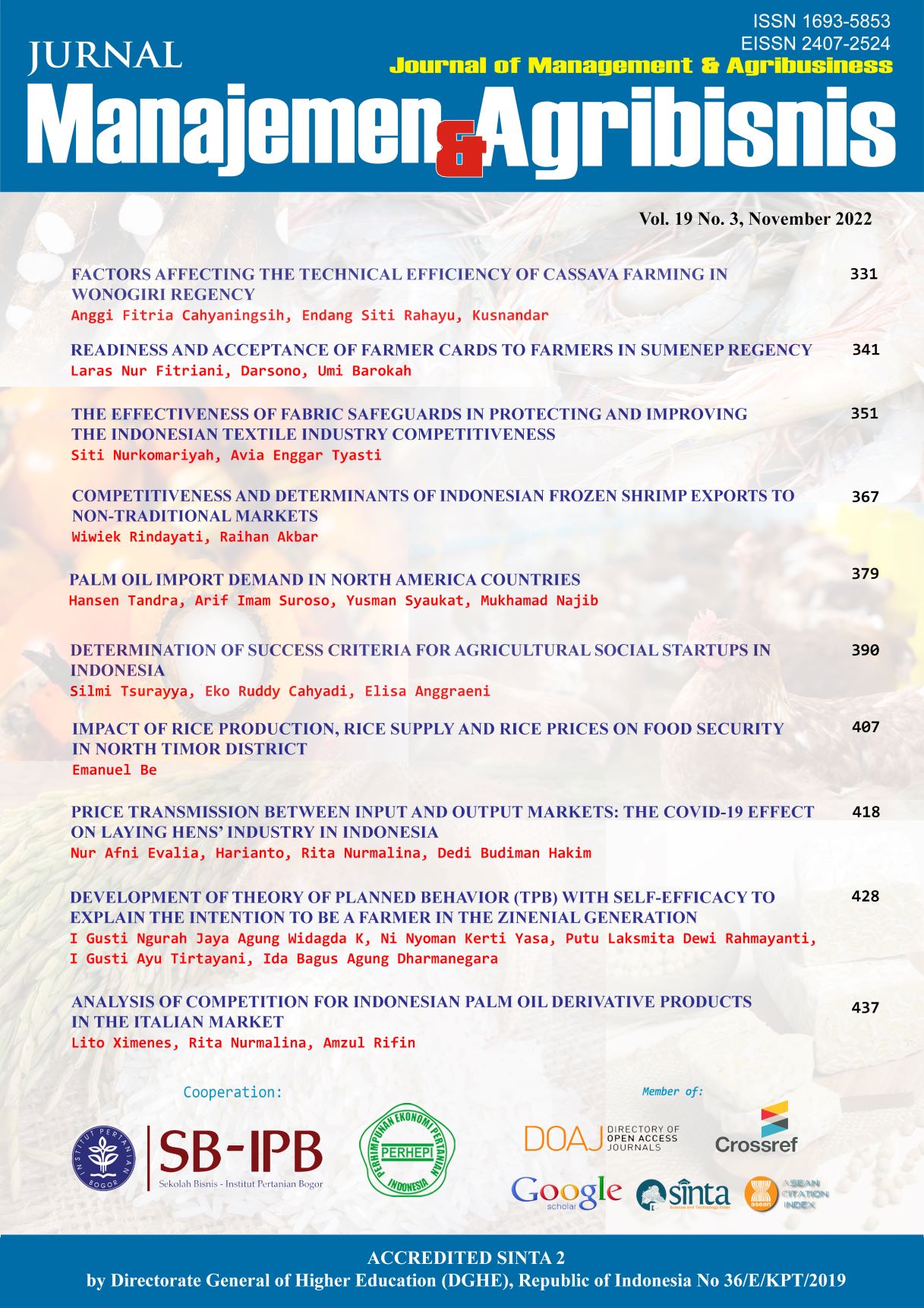The Effectiveness of Fabric Safeguards in Protecting and Improving the Indonesian Textile Industry Competitiveness
Abstract
This study investigates the effectiveness of fabric safeguards set by the Indonesian government on protecting and improving the competitiveness of the textile industry in the domestic and global markets. Data on exports and imports of 107 HS codes of fabrics subject to additional import duties in 2011-2020 are used to measure Indonesia's competitiveness compared with six major exporting countries. The Revealed Comparative Advantage (RCA) and the Trade Specialization Index (TSI) interpret the Indonesian fabric competitiveness and its competitors. Independent variables of this research are Safeguard Measure Import Duty (BMTP), Most Favoured Nation (MFN) rates, period of investigation, exchange rate, and inflation. The results show that the safeguard, MFN, and period of investigation significantly affect the decline in fabric imports, but other variables have no significant effect. The regime effectively protects Indonesia's textile industry, which is marked by a decrease in the value and volume of imports during the validity period. The RCA indicates that Indonesia does not have a comparative advantage, and according to the TSI, Indonesia is an importing country. BMTP cannot change Indonesia's position as a net exporter and improve its competitiveness. This study implies that it is necessary to increase investment in more efficient production machines with high productivity, optimize the supply chain, reduce production and enterprise costs, and restructure business models; thus, their competitiveness increases in domestic and foreign markets.
Keywords: BMTP, fabric, comparative advantage, trade index, impor duties
Authors
Authors who publish with this journal agree to the following terms:
- Authors retain copyright and grant the journal right of first publication with the work simultaneously licensed under a Creative Commons Attribution License that allows others to share the work with an acknowledgement of the work's authorship and initial publication in this journal.
- Authors are able to enter into separate, additional contractual arrangements for the non-exclusive distribution of the journal's published version of the work (e.g., post it to an institutional repository or publish it in a book), with an acknowledgement of its initial publication in this journal.
- Authors are permitted and encouraged to post their work online (e.g., in institutional repositories or on their website) prior to and during the submission process, as it can lead to productive exchanges, as well as earlier and greater citation of published work (See The Effect of Open Access).

